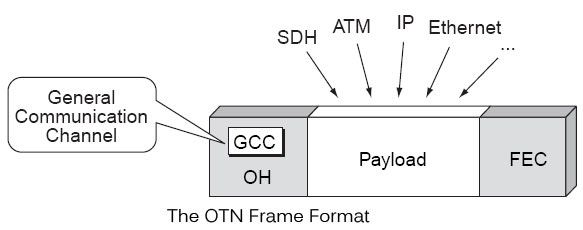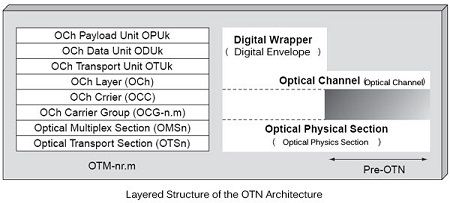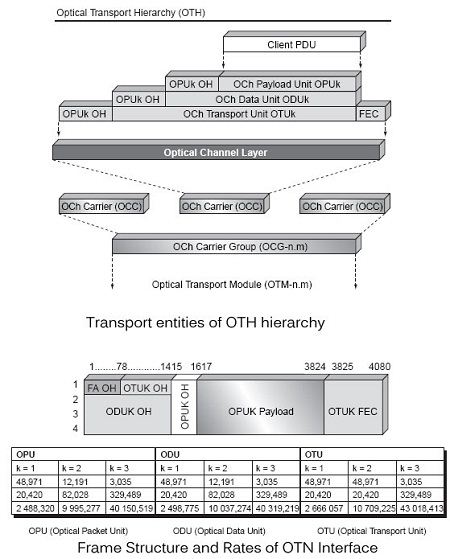SONET/SDH standard was carry telephone speech, and it took many adaptations for the transport of frames and type of IP packets, ATM, or others. The successor of SONET/SDH has been launched in early 2002 and standardized by ITU-T as the OTN (Optical Transport Network). Its role is to channel packages on routes to 2,5, 10 and 40 Gbit/s. The corresponding recommendation G.709 carries the number.
Figure shows the new format of the synchronous OTN frame.

All types of frames are to be transported transparently in the OTM frame, without them having to be modified. A field is expected to add an FEC (Forward Error Correction) to perform the necessary corrections to achieve an error rate determined.
OTN interface consists of several levels. Starting from the optical fiber with the following layers are:
• OTS (Optical Transmission Section), which supports signal transmission optical checking its integrity.
• OMS (Optical Multiplex Section), which supports features for to provide a wavelength-division multiplexing.
• OCH (Optical Channel), which is the level of one end of the optical signal. This level allows modification of the connection and rerouting, and maintenance functions the connection.
• DW (Digital Wrapper), which corresponds to the digital envelope.
The level Digital Wrapper itself is broken down into three levels:
• OTUk (Optical Transport Unit), which gives the possibility of adopting a correction using FEC.
• ODUk (Optical Data Unit), which manages connectivity regardless of clients and offers protection and management of this connectivity.
• OPUk (Optical Payload Unit), which indicates a match between the signal and the type of client.
The overall architecture of OTN is shown in Figure.

Figure shows the different transport entities on the interface OTH (Optical Transport hierarchy) and Figure of the frame structure and the flow rates of OTN interface.

 Dinesh Thakur holds an B.C.A, MCDBA, MCSD certifications. Dinesh authors the hugely popular
Dinesh Thakur holds an B.C.A, MCDBA, MCSD certifications. Dinesh authors the hugely popular